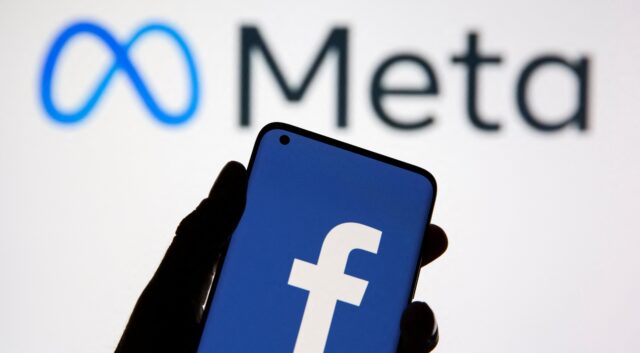“A brand is the set of expectations, memories, stories, and relationships that, taken together for a consumer’s decision to choose one product or service over another.”
Seth Godin
Branding is a complex concept and it’s much more than having a great product, creating a fancy logo and coming up with a catchy tagline.
These tangible elements are only the beginning of the process.
There are various more elusive and subtle factors that can make a world of difference when it comes to how your audience perceives your brand and feels about it.
Every touchpoint counts, and a well-thought-out strategy is essential for presenting your brand in the best possible light.
Who would it be?
Defining your brand should be the first step in your strategy.
64% of consumers say that shared values are the main reason why they have a relationship with a particular brand.
Try imagining it as a person in order to establish its purpose, core values, beliefs, and other characteristics that make it unique.
Your brand’s DNA, that is, a set of distinctive qualities that your brand possesses, is what distinguishes it from similar brands that sell the same type of products.
And this is exactly what humanizes your brand and makes it appealing to your target audience.
This is another crucial question as it will help you create the right visuals, relatable copy, messaging, and brand narrative, as well as pick the communication channels that your audience uses.
Generally speaking, by understanding your audience, their needs, interests, and pain points, you’ll be able to address their concerns, offer them solutions, and communicate with them using their language.
Remember that 80% of your profit comes from 20% of your customers, so try to identify who’s at the core of your customer base and direct your branding efforts at those people.
So, how do you do that?
First of all, do your research and create an ideal customer profile (ICP) as well as buyer persona(s). This will allow you to have a relatively accurate roadmap that will direct your marketing and branding efforts.
Secondly, slice and dice your audience into smaller segments and create tailored messaging and content that resonates with their needs and interests.
As Scott Cook, Co-Founder of Intuit, puts it, “A brand is no longer what we tell the consumer it is – it is what consumers tell each other it is.”
83% of consumers are more inclined to trust peer recommendations over what brands tell them.
One of the best and most effective ways of building trust with your prospects is leveraging social proof. Ask your existing happy customers to share their success stories with you and post them on your website and social media channels.
Use the opportunity to ask your customers what they think about the product they purchased and your brand by sending them a short customer satisfaction survey along with your Thank You email. You can later use this feedback in your promotions.
Offering incentives is a legitimate method of encouraging your customers to write an online review.
Handling negative feedback properly will generate positive PR for your brand.
Make sure that your messaging, tone of voice, visual identity, and above all, service and product quality are consistent.
Consumers like when a brand is dependable. They want to know what exactly to expect when they purchase a product, and this predictability is crucial for customer loyalty.
The same goes for your narrative.
If you want your prospects to remember and recognize your brand, your messaging has to be aligned with your brand’s appearance as well as with your audience’s lingo.
While it’s OK to borrow some ideas from other successful brands, you should be very careful about this when it comes to creating your own brand identity.
It’s the authenticity and uniqueness that really matter.
By trying to steal some of the big brands’ thunder, you’ll only hurt your brand’s integrity and turn it into a lame imitation of your more famous and successful competitors.
Your brand should reflect your unique values to which your audience will easily relate.
This is becoming increasingly difficult nowadays with all the brands out there trying to find their place under the sun.
Similarly, consumers have way too many options, which means that you really need to make a killer first impression if you want them to notice your brand.
Your website is usually the first contact that your audience has with your brand, so you’d better make it count.
And this isn’t just an empty phrase, but a very serious approach to branding.
Contrary to popular belief, brands belonging to the low-end market can also add value.
The point is to always deliver on your promise to customers.
There are different methods for spreading the word about your brand, and the best way to capitalize on WOMM is to be helpful and provide your target audience with some advice on how to solve their common pain points.
It wouldn’t hurt to throw in a couple of incentives too.
Here’s what you can do:
Did you know that 95% of purchasing decisions are irrational?
This means that besides listing all those cool features and benefits of your product or service won’t convince your prospects to buy from you unless you’ve managed to create some kind of emotional appeal.
By understanding your target audience and their problems, you’ll be able to strike a responsive chord with them and establish a connection.
Here’s what your brand should evoke:
People trust experts, and by establishing yourself as a thought leader in your niche, you’ll ensure that they trust your brand too.
This isn’t easy and won’t happen overnight.
Start by publishing useful blog posts which tackle different issues from your industry and offer your opinion on the important things.
Build your professional reputation by sharing your expertise and experiences in the field and try to be as helpful as possible.
A strong brand strategy is essential for differentiating your brand in a competitive market and turning your prospects into loyal paying customers.





